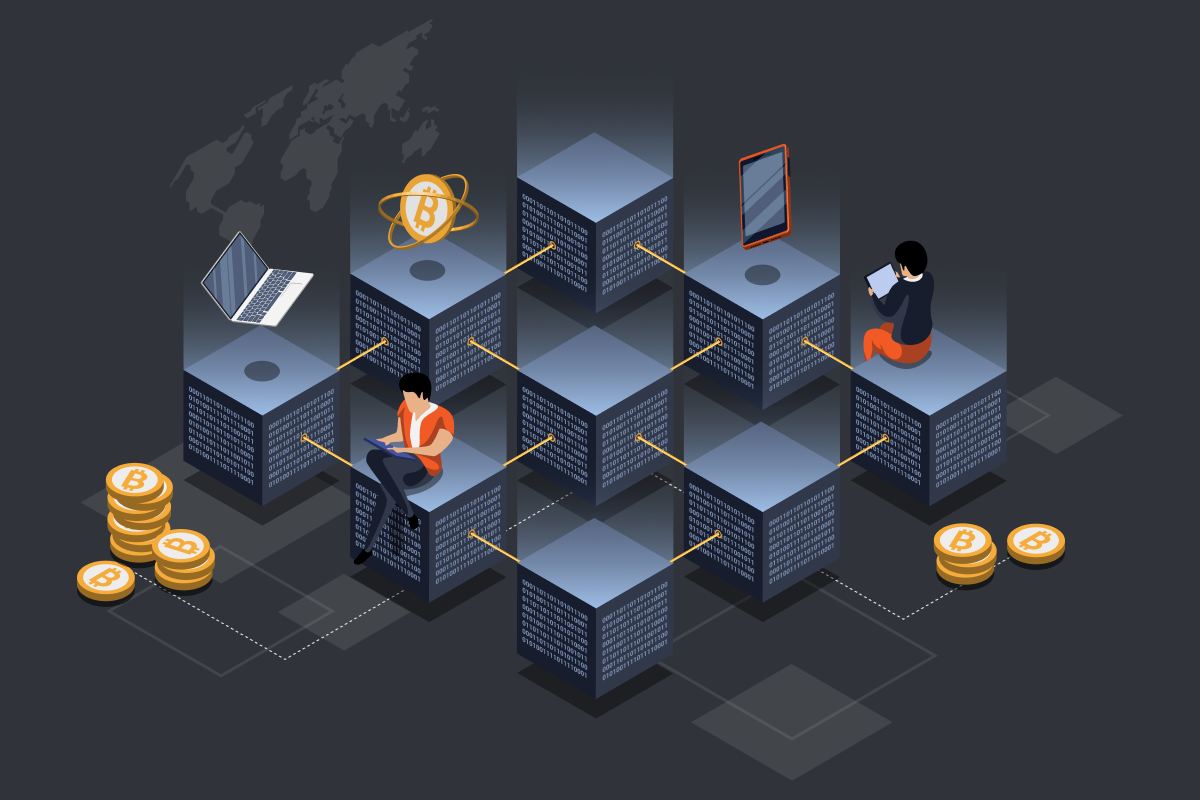As more and more people choose blockchain as a viable alternative to existing centralized systems and seek improved security and privacy, the surge in blockchain and cryptocurrency adoption has given rise to the issue of scalability due to increasing strain on the networks. This leads to the main problem of higher gas or transaction fees while trying to process a transaction on the blockchain.
The main goal of scalability is to increase transaction speed and the number of transactions per second without sacrificing decentralization or security. Another type of scaling is on-chain scaling, which requires changes to the main blockchain, also known as layer 1 scaling. For a long time, sharding the blockchain was expected to scale. Sharding involves breaking the blockchain into separate parts, called shards, which would be checked by smaller groups of validators. However, scaling by layer 2 rollups has emerged as the primary scaling technique.
.png?alt=media&token=350f39e9-21b3-4134-993f-a09d65cc9100)
What is Layer 2?
Layer 2 networks provide a way to extend the capabilities, reduce congestion, and enhance the scalability of the layer 1 blockchain without compromising its security. Layer 2 is an off-chain solution used for scaling the main blockchain networks like Bitcoin, Ethereum, Polygon, etc. Layer 2 takes out bundles of transactions from the main chain, processes the transactions on their behalf, and throws them back into Layer 1. Layer 2 scaling solutions do most of the heavy lifting, making the main chain less crowded with transactions and leading to faster processing of transactions on the blockchain, reducing the gas prices per transaction.
They are used to tackle scalability issues, introduce new functionalities, or experiment with alternative consensus mechanisms, all while leveraging the robustness of the Layer 1 blockchain for security and data integrity.
Most Layer 2 solutions operate using a central server or a group of servers, often called nodes, validators, operators, sequencers, or block producers. When people make transactions on Layer 2, instead of sending them directly to the main blockchain (Layer 1), they submit them to these Layer 2 nodes. The Layer 2 nodes then put together these transactions into bundles before securely connecting them to the main blockchain (Layer 1). Once connected, the transactions are protected by the security of the main blockchain and cannot be changed.

Key Features of Layer 2
Scalability:
- Layer 2 solutions process transactions off-chain, reducing the burden on the main blockchain and helping to increase the network's scalability.
Reduced transaction costs:
- Layer 2 solutions typically result in lower transaction fees, making small transactions more convenient.
Increased Transaction Confirmation Speed:
- Transactions on Layer 2 networks are processed more quickly since they don't have to wait for every detail to be recorded on the main blockchain, resulting in faster transaction speeds.
Privacy Enhancements:
- Some Layer 2 solutions offer improved privacy features by conducting certain transactions off-chain. This can be beneficial for sensitive or private transactions.
Smart Contract Support:
- Many Layer 2 solutions support the execution of smart contracts, enabling a wide range of decentralized applications (DApps) to run efficiently.
Compression:
- Some Layer 2 implementations bundle multiple transactions together before connecting or anchoring them to Layer 1. This helps optimize space on the main blockchain.

Main Types of Layer 2 Solutions
State Channels:
Enables off-chain transactions between participants for faster and more cost-effective interactions.
Example: Lightning Network (Bitcoin).
Rollups:
Combine multiple transactions off-chain before posting a summary on the main blockchain.
Types:
Optimistic Rollups: Assumes transactions are valid unless proven otherwise.
ZK-Rollups (Zero-Knowledge Rollups): Uses zero-knowledge proofs for on-chain validation without revealing transaction details.
Examples: Optimism, Arbitrum, and zkSync.
Sidechains:
Independent, separate blockchains are connected to the main blockchain to handle certain transactions and improve scalability.
Example: Polygon.
Plasma Chains:
Framework for scalable blockchains with child chains to reduce the load on the main blockchain.
Example: OmiseGO.

Conclusion
In conclusion, the journey of Layer 2 scalability has been nothing short of groundbreaking. By utilizing the power of Layer 2, we are not just scaling the blockchain; we are redefining its core. The incredible speed, reduced costs, and improved user experiences offered by Layer 2 solutions paint a promising picture for the future of decentralized technologies.
The journey towards a more scalable and user-friendly blockchain ecosystem has just begun, and the potential is limitless. In the dynamic landscape of decentralized technologies, Layer 2 is the key that unlocks new possibilities, propelling us into a future where blockchain truly thrives. The scalability revolution is here, and it's powered by the brilliance of Layer 2.
